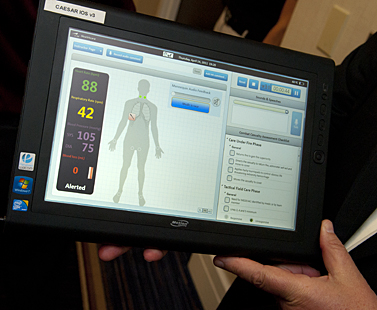Battlefield Ready
Lecture opens with simulation of life-threatening combat injuries
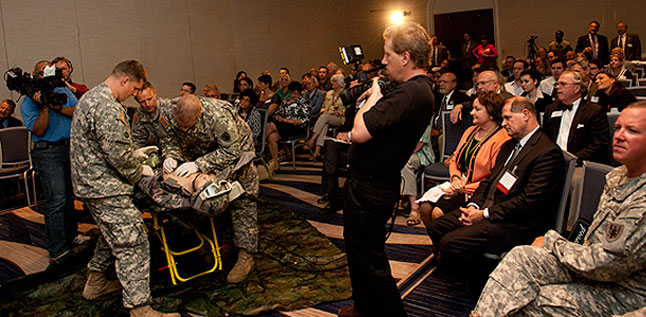
It wasn’t the typical opening for a lecture series. Before featured speaker Dr. Richard Satava was introduced, a drill simulating combat injuries sustained during an explosion was demonstrated using the highly realistic trauma patient simulator CAE Caesar.
To the surprise of the audience, several U.S. Army Reserve flight medics rushed to the aid of Caesar, who was struggling to breathe and losing consciousness.
Working smoothly as a team, they performed a needle decompression to treat a life-threatening tension pneumothorax. They applied a tourniquet to the “soldier’s” right thigh to stop the hemorhaging associated with a mock amputation. Minutes later, before medical simulation technology pioneer Dr. Satava stepped behind the podium, Caesar had regained consciousness and was stablized.

U.S. Army Reserve flight medics apply a tourniquet to
trauma patient simulator Caesar’s thigh to stop “bleeding.”
Dr. Satava , professor of surgery at the University of Washington Medical Center and senior science advisor to the U.S. Army Medical Research and Material Command, spoke about “Medical Simulation: Vision for the Future of Medicine” at the USF Health Keynote Lecture on April 14 in Tampa. The medics, from the F Company, 5-159th General Support Aviation Battlion in Clearwater, FL, will deploy to Afghanistan later this year.
Caesar, developed by a Canadian aerospace company, is one of several high-fidelity patient simulators housed at the USF Health Simulation Center at Tampa General Hospital. The hospital-based facility is a prototype for the 90,000-square foot freestanding USF Health Center for Advanced Medical Learning and Simulation (CAMLS) under construction in downtown Tampa.
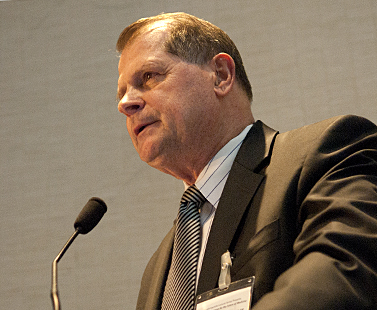
Medical simulation pioneer Dr. Richard Satava talked about the future of
simulation technology in educating and training health care professionals.
One of the most physiologically advanced trauma patient simulators, Caesar represents the next generation of medical simulation technology for training health professionals.
The durable, computer-programmable simulator generates a wide range of realistic responses and can be used in challenging terrains and climates confronting first-response teams, whether they are on a battlefield, at the scene of a disaster or in the emergency room. Caesar provides immediate and continuous feedback to put responders critical thinking skills to the test. His chest rises and falls as he breathes, he has a pulse, he bleeds, his skin feels life-like, the levels of consciousness depicted in his speech and eye response can vary.
In short, simulation scenarios made possible by the advanced technology embodied in Caesar minimize the transition from classroom to the field to help improve safety and patient care.
“Education and training done well translates into better outcomes for patients,” said USF trauma surgeon Dr. John Armstrong, medical director for CAMLS. “Simulation like this will be a powerful tool for transforming how surgeons, physicians and other health professionals learn and elevate their skills to the next level.”

Medics work as a team to perform a needle decompression
on the patient simulator.
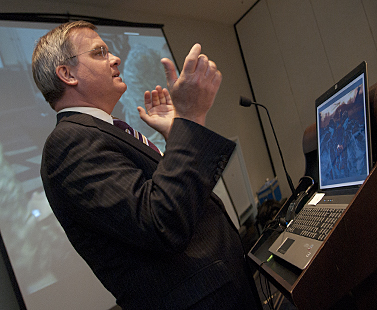
Dr. John Armstrong, medical director of the USF Health
Center for Advanced Medical Learning and Simulation

Dr. Deborah Sutherland, CEO of CAMLS
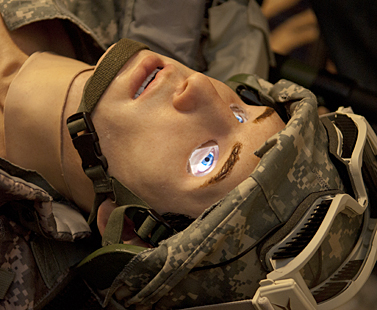
Caesar regains consciousness, depicted in the simulator’s
realistic eye response.
Story by Anne DeLotto Baier, and photos by Eric Younghans, USF Health Communications

